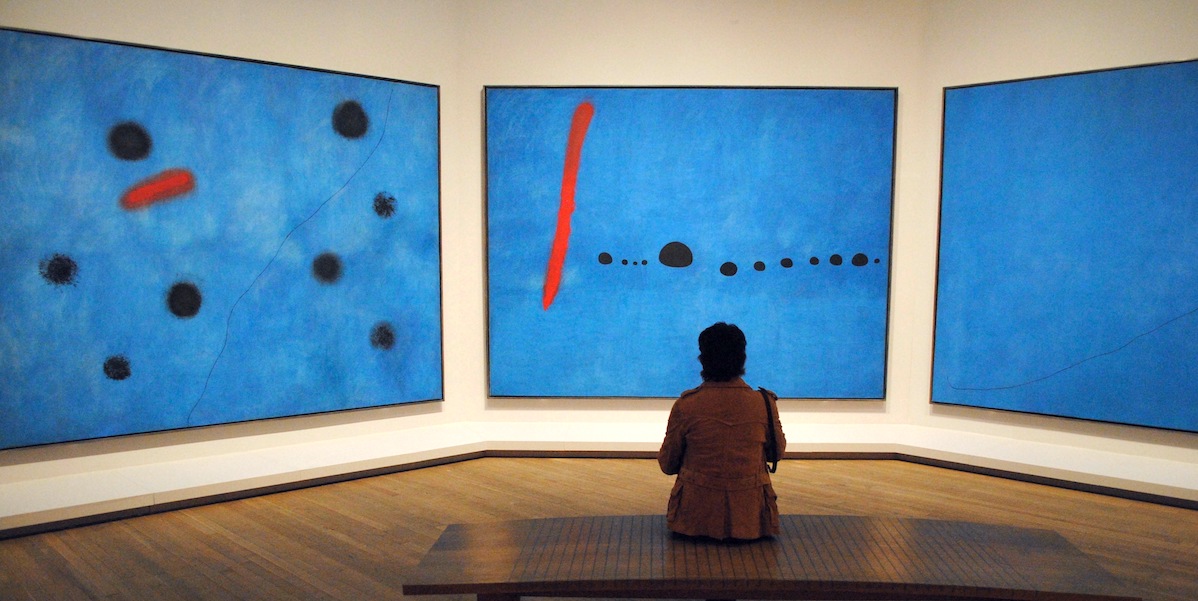New Miro Exhibition “The Ladder of Escape” Opens At Tate Modern
Tate Modern’s new exhibition of Spanish born Artist Joan Miro titled “The Ladder of Escape” is the first London survey of the artist’s work in over 50 years. It looks set to be another blockbuster to follow in the footsteps of the recent Gauguin “Maker of Myth” show, which is now in Washington DC. This is an exciting opportunity to look again at one of the most innovative artists of the 20th century and reaffirm his contribution to painting sculpture and printmaking.
The works in the exhibition have been borrowed from museums and galleries from around the world.The preparation has taken months to coordinate and the outcome groups works never seen displayed together in a refreshing insight into the psyche of a surrealist painter who never assimilated the notions of Freudian-Marxist dogma. One such example will be the reuniting of a 1961 triptych “Hope of a Condemned Man” which is as subtle as Japanese calligraphy. Something the artist admired,but also, as the title indicates, an object for contemplation.It is one of his largest canvases. A work crucial to view together, in the same way a Rothko or Monet group comes alive and absorbs the room.
The exhibition will begin with early figurative paintings and move through his experiments with Surrealism. Covering his career from a determined 24 year old to works he made in his eighties. Over the period of six decades we focus on the recurring theme sub-titled “The Ladder of Escape” a deliberate reference to Miro’s use of this symbolic imagery. His career was long and immensely prolific. Examples included in the exhibition are, The Farm, an early masterpiece but you will have to go to the Albright Knox Gallery in Buffalo in New York to see his wonderful Harlequins Carnival. Perhaps his greatest single work.
This survey traces how Miró’s immersion in issues of Catalan identity and politics emerged early-on and met the challenge of the Spanish Civil War as well as the Second World War. It also picks up on these threads as they surfaced again in the works of the 1960s and 1970s, when self-examination parallels the final years of Franco’s regime in Spain. The exhibition traces an anxious and politically engaged side to Miró’s work that reflects his passionate response to one of the most turbulent periods in European history. Working in Barcelona and Paris, Miró tracked the mood of the Spanish Civil War and the first months of the Second World War in France. Under the political restrictions of Franco’s Spain, Miró remained a symbol of international culture, and his grand abstract paintings of the late 1960s and early 1970s became a mark of resistance and integrity in the dying years of the regime. Telling the story of Miró’s life and the time he witnessed reveals a darker intensity to many of his works.
Miró is among the most iconic of modern artists, using a language of symbols that reflects his personal vision, sense of freedom, and energy. This is a rare opportunity to enjoy more than 150 paintings, drawings, sculptures and prints from moments across the six decades of his extraordinary career. Tate Modern has brilliantly brought Miro to life again in a refreshing new light. Joan Miro, “The Ladder of Escape” from the 14 April until 11 September 2011
Lead image: ©Artlyst

